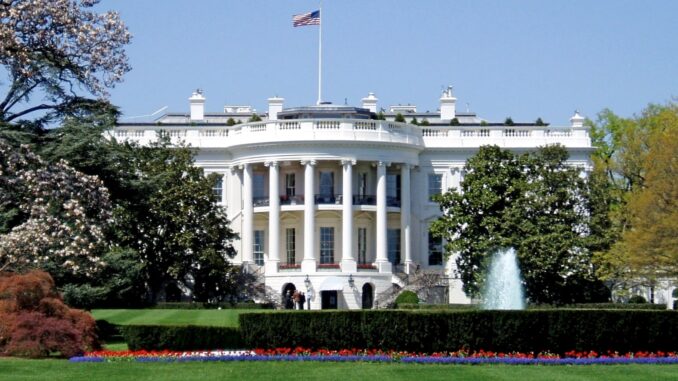
On Sept. 22, President Donald Trump issued the Combating Race and Sex Stereotyping Executive Order, or Executive Order 13950. The Executive Order has prohibited “[promoting] race or sex stereotyping or scapegoating” in federally funded contractors’ workplace trainings.
The executive order forbids teaching “divisive concepts” such as race and scapegoating which is defined in the Executive Order as: “any claim that, consciously or unconsciously, and by virtue of their race or sex, members of any race are inherently racist or are inherently inclined to oppress others, or that members of a sex are inherently sexist or inclined to oppress others.”
The text of Executive Order 13950 heavily implies banning training on white privilege, or inherent white benefit of systemic oppression.
“Today, however, many people are pushing a different vision of America that is grounded in hierarchies based on collective social and political identities rather than in the inherent and equal dignity of every person as an individual,” the Executive Order states. “This ideology is rooted in the pernicious and false belief that America is an irredeemably racist and sexist country; that some people, simply on account of their race or sex, are oppressors; and that racial and sexual identities are more important than our common status as human beings and Americans.”
However, there is a vast array of data that suggests that there is rampant systemic racism, especially in policing, in the United States, and even data to suggest that white people benefit inherently from it. An article by Laura Bronner from FiveThirtyEight, a polling, political and sport website owned by ABC News, not only provides various opinion and academic article links to read more about the basic data demonstrating inherent racism in policing, but it also explains why the real level of discrimination may be even worse than the data implies.
“Essentially, all the discrimination we can actually measure at each specific stage is an underestimate of how much is actually happening,” Bronner writes.
Bronner cites the problem of “collider bias,” explaining that this bias forms when the original data set is biased. In policing this bias actually appears to form from inherent racism. According to Bronner, “police officers are more likely to stop Black and Hispanic people than white ones — and that more of those stops are unfounded.” (More information on this claim can be found in Bronner’s article and here.) Thus, if there is a bias in the subset of the population that gets stopped, and that is the denominator that is used to describe the data, then the whole picture is missed and underrepresented. This is due to “collider bias.” If the denominator of the data was rather the whole population of people the police encounter and don’t stop, in addition to those who are stopped, a wider image of bias would come into view. There is an excellent visual of this effect in the article.
However, this executive order has serious implications for colleges and universities who receive federal funding. When SUNY New Paltz’s Chief Diversity Officer Tanhena Pacheco Dunn released a campus-wide statement, Pacheco Dunn pointed out that the greater SUNY response, had to be vetted “because of the potential risk of losing federal funding for SUNY,” as well as some financial aid for SUNY students.
In the campus-wide statement, Pacheco Dunn also writes that the executive order is “strongly counter to our campus goals and values of fairness, equity and inclusion, and the recognition that realizing those values demands hard and sometimes discomforting work and collaboration across the institution.”
Pacheco Dunn also stated that “There does not seem to be a specific mandate on prohibition of academic research into or curriculum that teaches or discusses these concepts. The college continues to support this critical work and the primary purview and responsibility of faculty to determine academic content and methodology.”
Executive Order 13950 went into effect immediately on Sept. 22, 2020, but “the requirements for federal contractors and subcontractors will apply to contracts entered into 60 days after the date of the executive order.”
Read more about Executive Order here or read the order in full here.
